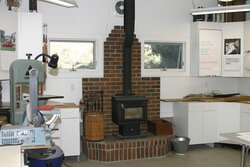- Aug 20, 2007
- 644
Preparing to install Napolean 1150, but unfortunately I have a truss directly above where I'd like the stove pipe/chimney pipe to travel. The attic area directly above the stove is not very high, on the order of 2 feet. I have thought of (1) using a couple of elbows to create the necessary offset to bypass the truss or (2) trying to frame in an opening which would necessitate cutting the truss (this would be done with a close friend who is an extremely competent builder and knows what he's doing).
I figure lots of people have faced similar problems - what do you recommend?
Thanks for opinions!
I figure lots of people have faced similar problems - what do you recommend?
Thanks for opinions!


